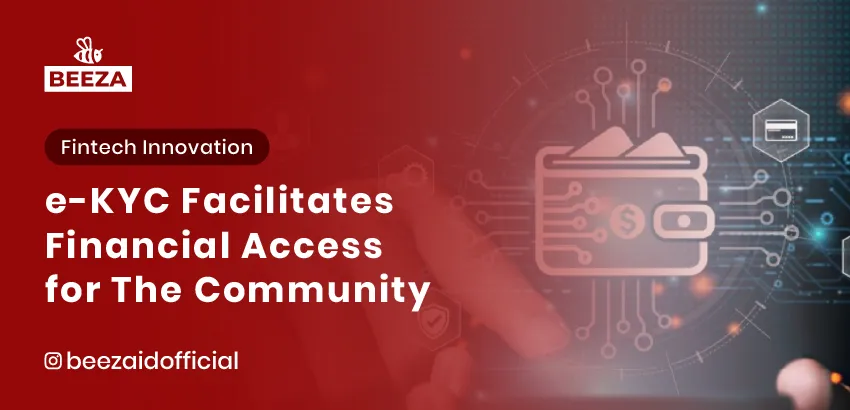
eKYC for Microfinance
Microfinance plays a crucial role in fostering financial inclusion by providing small loans and banking services to underserved communities. However, traditional onboarding processes often involve lengthy paperwork, high administrative costs, and security concerns, making it difficult for many people to access financial services.
This is where electronic Know Your Customer (eKYC) comes in. By leveraging digital identity verification through biometrics and AI, eKYC streamlines the customer onboarding process, making it faster, safer, and more cost-effective.
In this article, we’ll explore how eKYC transforms microfinance by reducing operational costs, increasing security, and expanding financial access for communities in need.
What Is eKYC and How Does It Work?
eKYC (electronic Know Your Customer) is a digital method of verifying customer identities using biometric authentication, AI-based document scanning, and electronic records. This eliminates the need for manual verification, making financial services more accessible.
How eKYC Works:
- Document Upload – Customers submit ID documents via an app or website.
- Biometric Verification – Face recognition or fingerprint scanning verifies the identity.
- AI-Driven Authentication – The system cross-checks data with government records.
- Instant Approval – Once verified, customers can access financial services immediately.
By automating identity verification, eKYC eliminates paperwork, speeds up onboarding, and enhances security.
Key Benefits of eKYC for Microfinance
1. Faster Loan Approvals and Account Openings
Many microfinance customers live in rural areas where visiting a bank branch is difficult. Traditional verification can take days or even weeks due to manual document checks.
With eKYC:
✅ Customers can verify their identity remotely via smartphones.
✅ Loan applications and account openings are approved within minutes.
✅ Financial institutions can serve more customers without physical branches.
Success Story: In India, digital lending platforms using eKYC have reduced loan processing times from days to just a few minutes, helping small businesses grow faster.
2. Lower Operational Costs for Microfinance Institutions (MFIs)
Running physical verification centers is costly, especially for microfinance institutions with limited resources.
With eKYC:
✅ No need for physical paperwork or in-person verification.
✅ Reduces expenses on staff, travel, and document storage.
✅ Financial institutions can expand services with fewer resources.
By switching to eKYC, MFIs can increase efficiency and profitability while serving more low-income customers.
3. Enhanced Security and Fraud Prevention
Identity fraud is a major challenge in microfinance, with fake identities and duplicate accounts leading to financial losses.
With eKYC:
✅ Biometric authentication ensures that only the rightful owner can access financial services.
✅ AI-powered fraud detection identifies suspicious activity in real-time.
✅ Eliminates risk of manual errors in identity verification.
Example: In the Philippines, financial institutions using eKYC have significantly reduced fraudulent loan applications, ensuring funds reach legitimate customers.
4. Expanding Financial Inclusion for Underserved Communities
A major barrier to financial access is the lack of proper identification documents, especially in developing regions.
With eKYC:
✅ Customers can verify their identity using biometric data instead of paper IDs.
✅ Enables women, farmers, and small entrepreneurs to access microfinance services.
✅ Supports governments’ efforts in financial inclusion and poverty reduction.
According to World Bank reports, digital banking solutions like eKYC can bring 1.7 billion unbanked people into the financial system.
Challenges of Implementing eKYC in Microfinance & Solutions
1. Limited Digital Infrastructure
Some rural areas have poor internet connectivity, making online verification challenging.
Solution:
✅ Develop offline-friendly eKYC solutions that store data temporarily and sync later.
✅ Use low-bandwidth apps that work on basic smartphones.
2. Data Privacy and Security Concerns
Handling sensitive customer data digitally raises concerns about privacy and cyber threats.
Solution:
✅ Use end-to-end encryption to protect customer information.
✅ Comply with data protection laws like GDPR and local regulations.
✅ Educate users on how their data is stored and used.
3. Adoption and User Awareness
Many customers, especially in low-literacy regions, are unfamiliar with digital verification.
Solution:
✅ Provide step-by-step guidance through video tutorials or in-person support.
✅ Offer multi-language and voice-assisted eKYC options for better accessibility.
Future Trends in eKYC and Microfinance
The adoption of eKYC is expected to grow, driven by advancements in AI, blockchain, and mobile banking.
Upcoming Trends:
✔️ AI-powered risk assessment for faster and safer loan approvals.
✔️ Blockchain-based identity verification for fraud-proof transactions.
✔️ Seamless integration with digital wallets and fintech apps.
As technology advances, eKYC will continue to revolutionize financial services, making banking more inclusive and efficient.
Conclusion
eKYC is transforming microfinance by accelerating onboarding, cutting costs, preventing fraud, and expanding financial access for underserved communities.💡 Is your financial institution ready to implement eKYC?
At Beeza, we provide secure, AI-driven eKYC solutions tailored for microfinance institutions. Contact us today to learn how we can help you enhance efficiency and reach more customers!